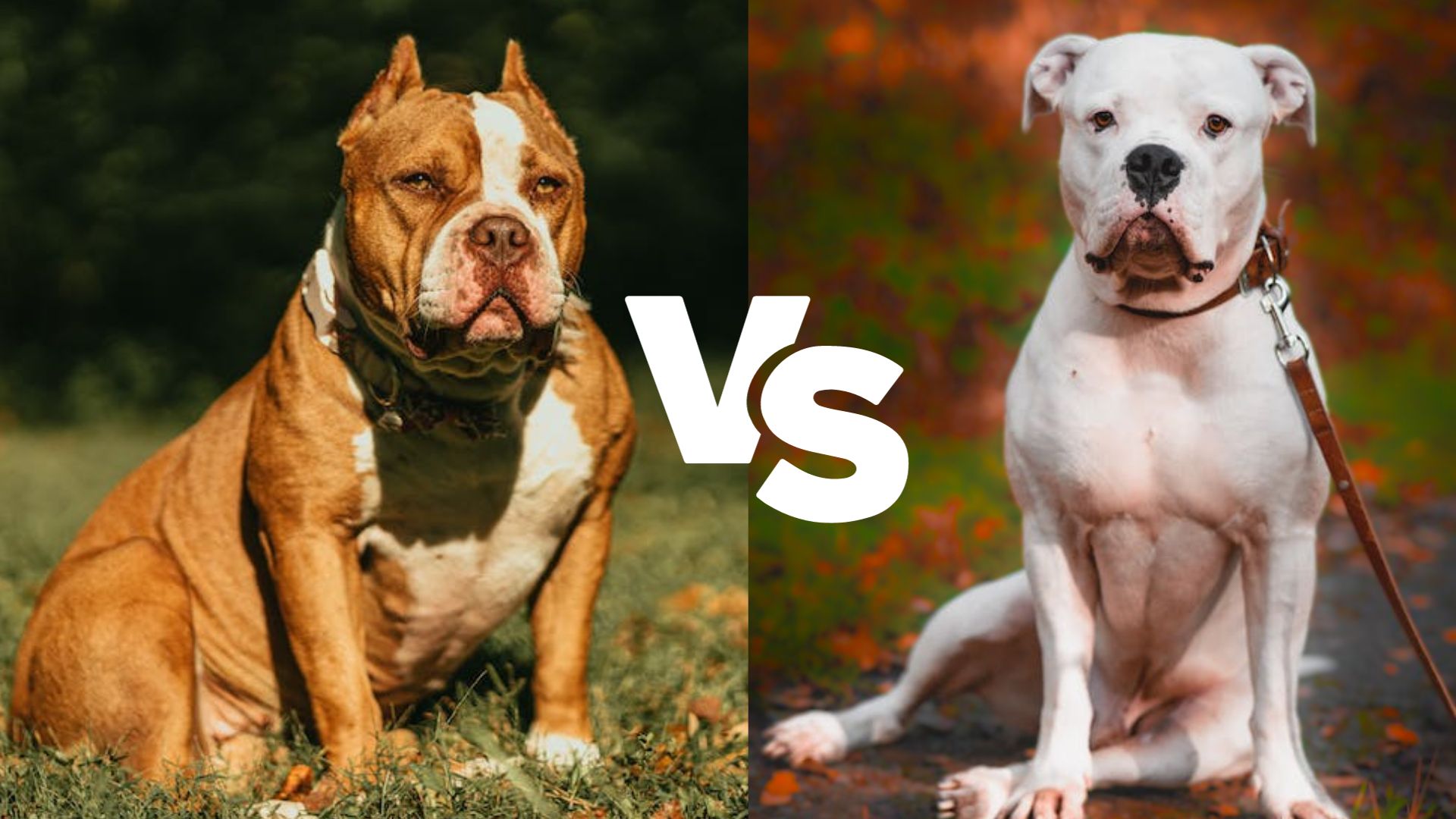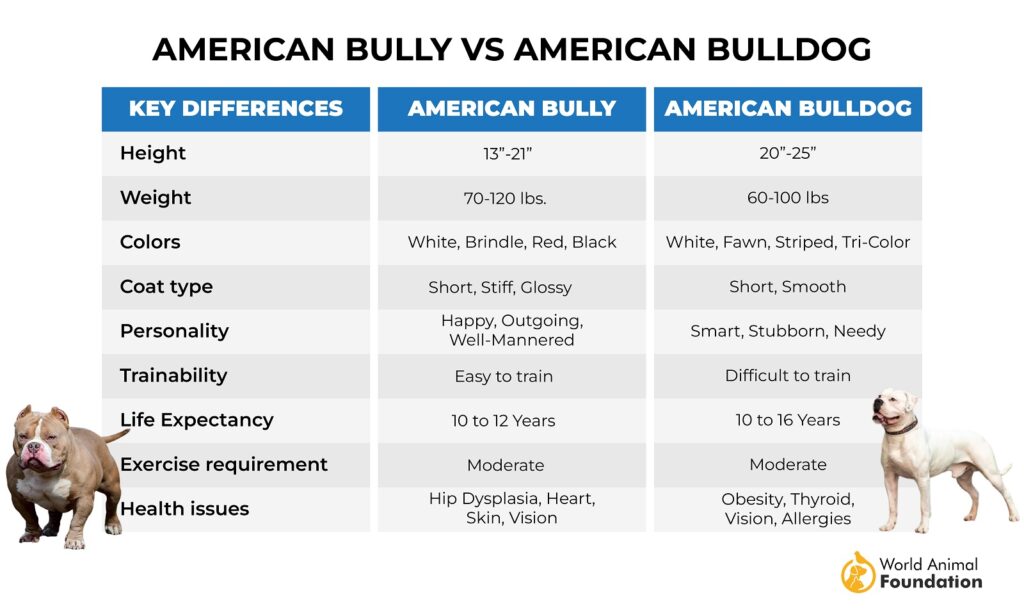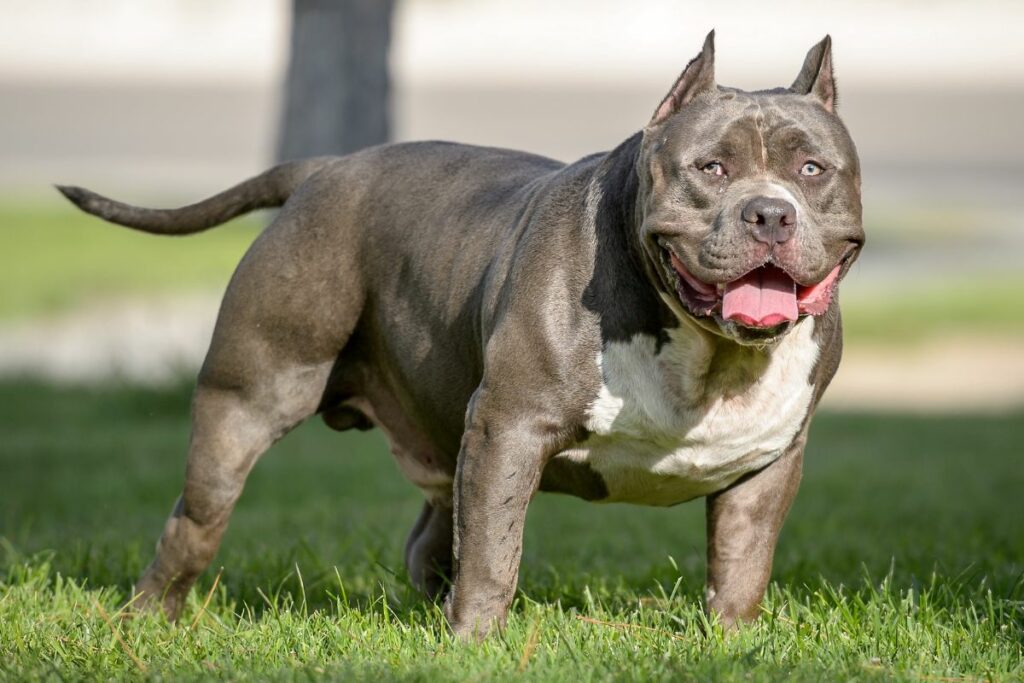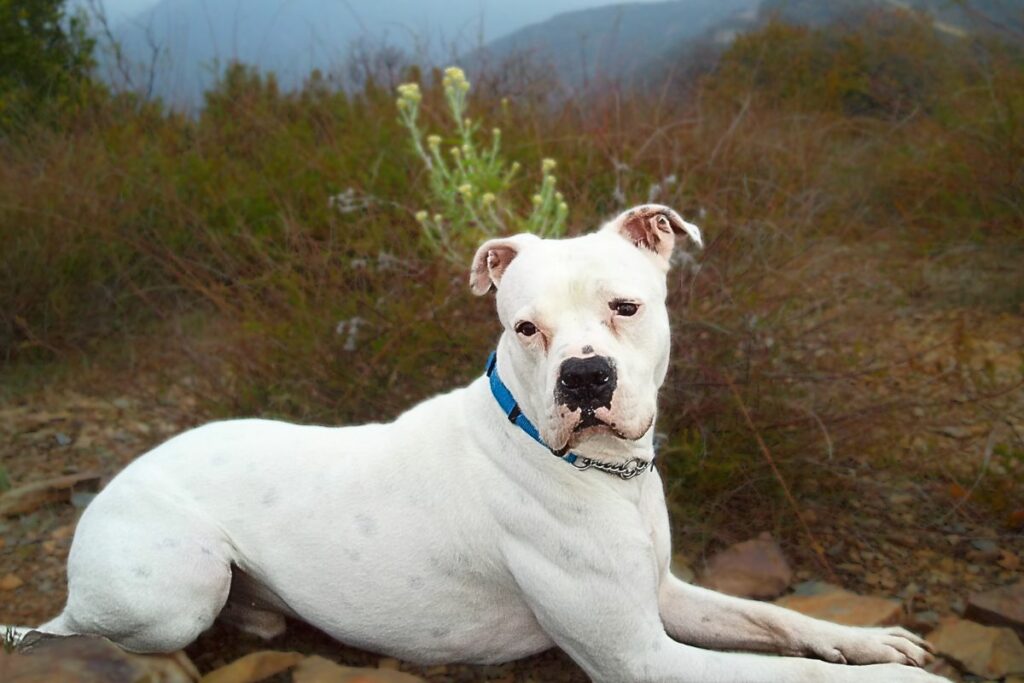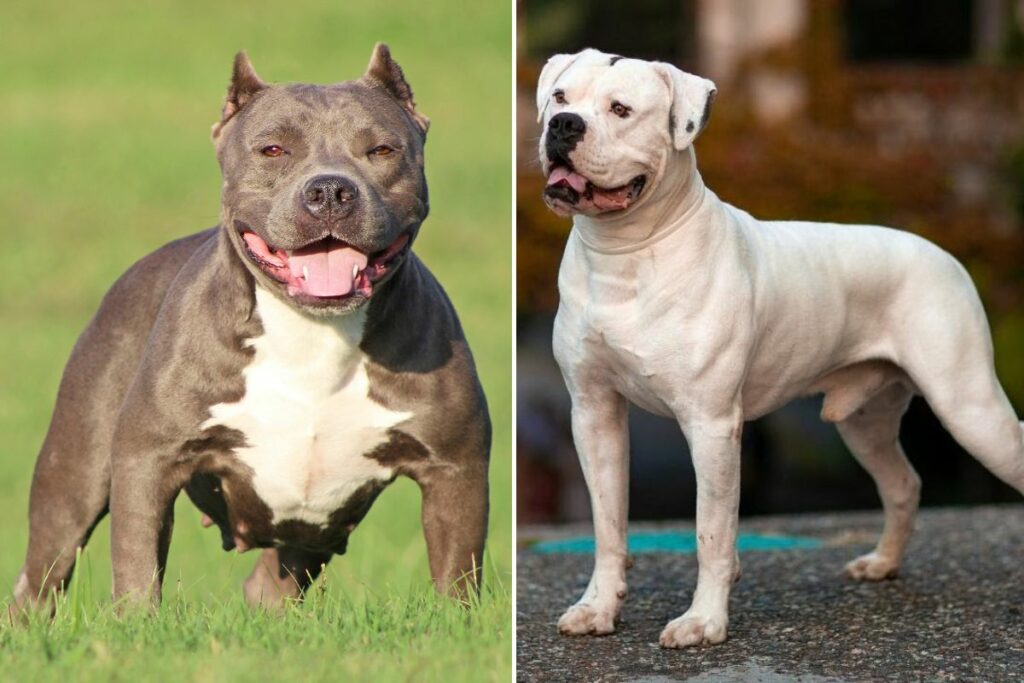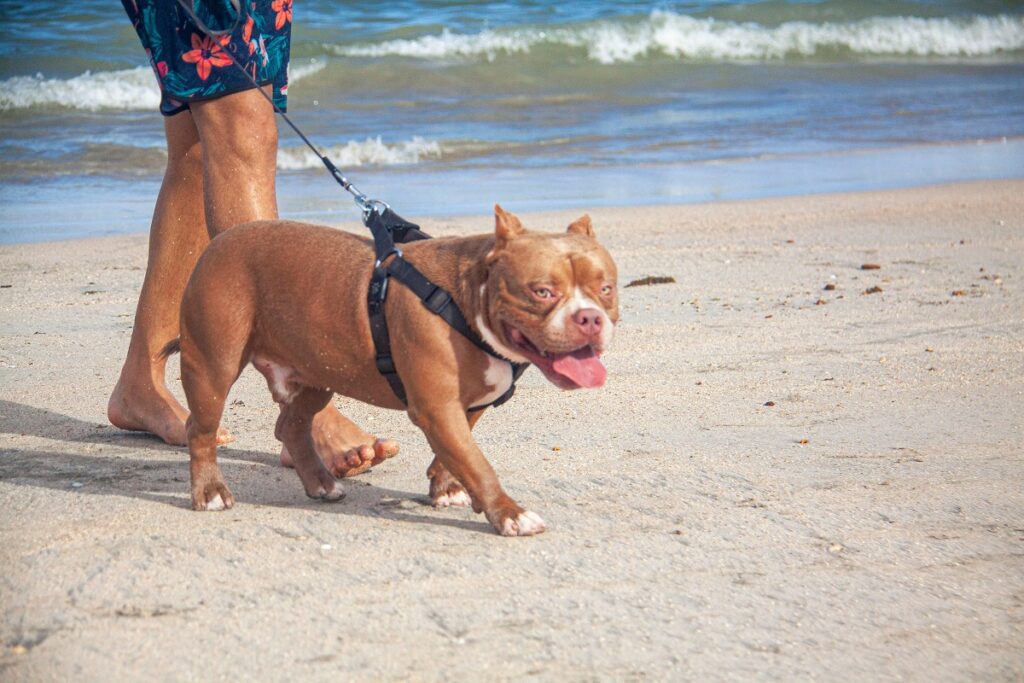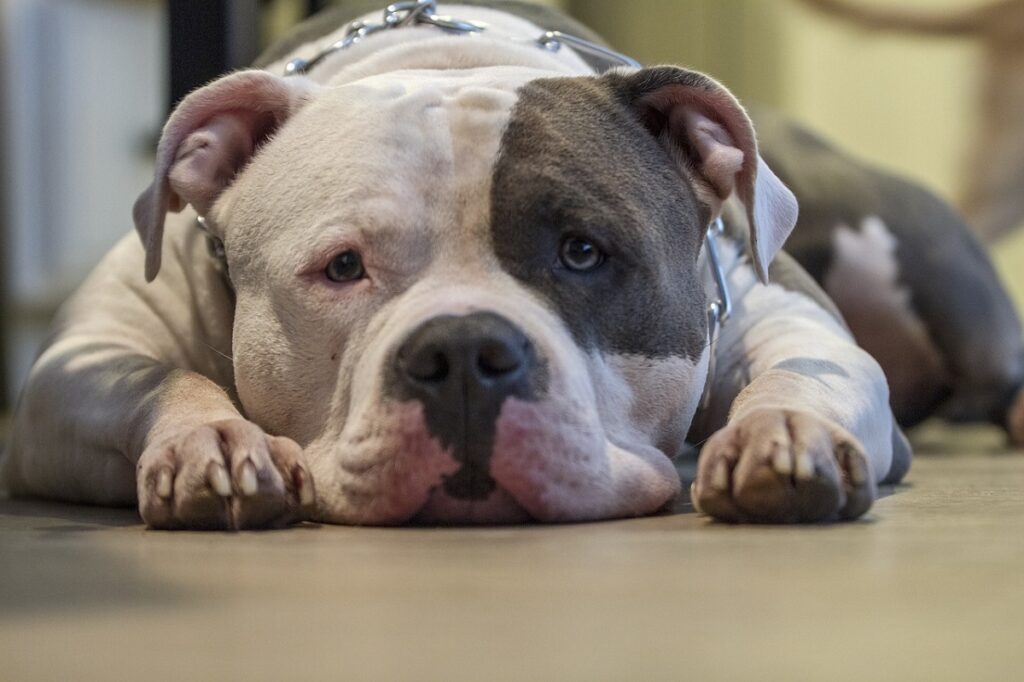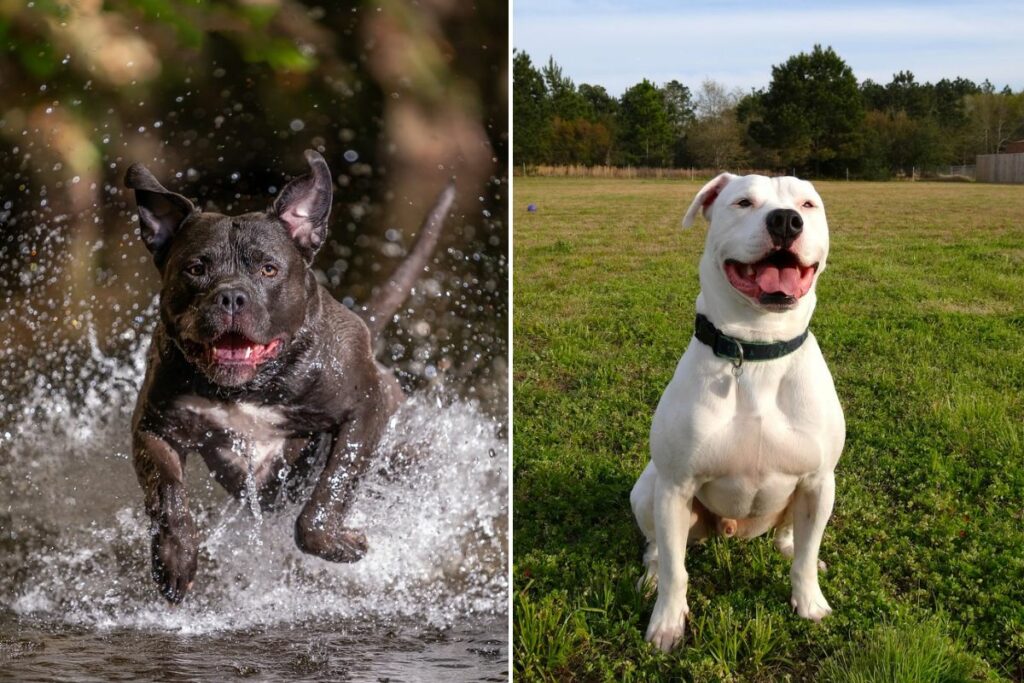The American Bully and American Bulldog, though similar in name and build, possess distinct characteristics. Often confused, these breeds boast unique histories and temperaments. While the muscular Bully is known for its friendly demeanor and stocky frame, the athletic Bulldog retains a stronger prey drive and a leaner physique. Understanding these differences is crucial for prospective owners. This exploration will delve into the key distinctions between these two powerful breeds, examining their origins, physical attributes, temperaments, and ideal lifestyles.
It’s easy to get these two dog breeds confused, but it’s kind of like saying a teacup is the same thing as tea. These are two different breeds of animal. We’re talking about the American bully vs American bulldog and will offer both their key differences and similarities.
Speaking of origin, one of these breeds is practically as young as a baby, and the other is older than Grandma Moses. And the differences don’t end there. There are personality, life expectancy, and health issues that differentiate each breed as well.
Also, how does the American pitbull terrier figure into this equation? Is it the same dog as one of these we’re going to discuss? We have those answers and more as we explore how these breeds are alike and how they’re different. Now, let’s get started…
American Bully Vs American Bulldog
That “baby” I mentioned would be the American bully breed which was developed by crossing several breeds: American pitbull terrier, American Staffordshire terriers, plus others. The goal was to produce a loyal and friendly companion who was eager to please its guardian. They hit the nail on the head with this one.
The other breed, the American bulldog, is as old as they come, which we’ll soon discuss. I guess they could have come up with more unique names for each, but that’s a decision that has already been made.
Both breeds have a muscular, stocky build and can look somewhat menacing until you get to know them. Then you might want to take one home. They’re both of heavy bone structure and bulky. Think defensive linemen in football.
It’s because of their looks that they’re often mistaken for pitbull terriers that are banned in some countries and some states in the US. (This is called BSL or breed-specific legislation. We stand firm that no breed should be banned.)
Now, let’s get into more detail about these spectacular breeds.
History
American Bully:
This American Bully dog breed was developed in the 1990s in the US. That’s right, it was only that long ago. They were bred to be the best animal companions there could possibly be using the top traits from the American pit bull terrier, Staffordshire Bull terriers, and the American Staffordshire terrier. (Some breeding lines used other breeds.)
Its origins are in the US in Virginia and Los Angeles (CA). American Bully breed then spread across the country and elsewhere, including Europe and Asia.
American Bulldog
Descendants of the English bulldogs, this breed was brought to America by immigrants in the 1800s. The American bulldog was a farm-working dog, performing tasks like guarding stock and property. Its unique talent for catching feral pigs made them popular, especially in the Southern states. They were initially called the “White English Southern bulldog.”
Appearance
American Bully
- Height: 13”-21”
- Weight: 70-120 lbs.
- Coat type: Short, smooth, and glossy
- Coat color: Black, white, grey, brown, blue, tan, fawn, red, PieBald (spotted or multi-colored), tri-colored, brindle
They’re divided into four categories: Standard, pocket, extra-large (XL), and classic, depending on their size.
American Bulldog
- Height: 20”-25”
- Weight: 60-100 lbs.
- Coat type: Short, smooth
- Coat color: White, white & black, white & brindle, white & brown, white & tan
Personality
American bully: Loyal and protective, this breed also has a friendly, affectionate, and sociable nature.
American bulldog: This breed is outgoing, friendly, loyal, and strong-willed.
Trainability
Both of these breeds want to protect their guardians and territory, so early obedience training and socialization is a must. This means getting them into a proper training class or doing it yourself, but there are many bonuses with attending a class.
Your dog can meet other dogs and people and encounter new situations (socialization). Start this as early as possible (usually around 8 weeks old). You can also make “playdates” with dogs who are enamored with your own.
Although both breeds can have a stubborn streak, with consistency and patience, training will start to stick. They’re quite intelligent, so don’t underestimate them. They also have a deep desire to please you. If you follow these suggestions, your dog should be able to greet guests, play with children and other dogs, and get along with just about anyone.
Life Expectancy
American Bully: 10-12 yrs.
American Bulldog: 10-16 yrs.
Health Issues
American Bully
- Spay or neuter (SO important. This can help ward off some types of cancers and not contribute to the dog overpopulation we already have.)
- Dental disease
- Hip and elbow dysplasia (joint issues)
- Heart disease
- Parasites (Worms, mites, fleas, etc. – Stay on top of those vaccinations.)
- Mange
- Obesity
- Skin issues (Keep skin folds/wrinkles clean and dry to protect them from infection.)
- Allergies
- Eye issues
- Infections – Viral and bacterial (Parvo, distemper, rabies)
- Brachycephalic obstructive airway syndrome or BOAS – (Can be fatal) Brachycephaly
American Bulldog
- Spay or neuter
- Dental issues
- Obesity
- Parasites
- Hip and elbow dysplasia
- Nerve disease
- Thyroid issues
- Eye issues
- Skin issues
- Infections – (Viral and bacterial)
- Mange
- Bladder or kidney stones
- Brachycephalic obstructive airway syndrome or BOAS – (Can be fatal)
We suggest taking your dog to the vet twice a year to make sure nothing is abnormal. Keep in mind that both breeds have the propensity to become obese, so ask your vet what specific food is the best to feed him or her.
You should also keep their nails trimmed once a month, but don’t overbathe. Once every couple of months, unless they get into something extra messy, should be fine.
Don’t forget to clean their ears once a month and look for any redness or parasites. Your vet can guide you to the right canine ear cleaner to use. Brush your dog between baths to keep their coat nice and healthy.
Exercise Requirements
American Bully
This bully breed is athletic and possesses incredible strength and endurance. Either a long walk or two shorter walks daily, plus puzzle games indoors to stimulate their minds, should suffice to relieve their energy. Due to the possibility of them developing severe symptoms of Brachycephaly, keeping them from becoming overheated is of the utmost importance.
American Bulldogs
They’re a well-balanced breed of high-energy (remember they were farm workers) and need proper exercise. Surprisingly agile, this medium-sized dog enjoys dog sports like agility and obedience competitions.
Long daily walks, along with playtime in the backyard or inside, should suffice. Always watch for signals of Brachycephaly in American bulldog breeds and make sure they don’t get overheated.
Cost of Ownership
If you purchase an American bully or an American bulldog, you’re going to pay a lot more than if you adopt. In fact, we stand by adoption over breeders for any breed. That said, the costs vary depending on the breeder’s location, the dog’s lineage, if it’s a show dog, and many more factors. These are only estimates:
- American bully: $2,000–$10,000+
- American bulldog: $1,500–$3,500
FAQs
How Do the American Bully and Pit Bull Differ from Each Other?
Pitbull breeds (“Pitbull isn’t a breed, but this refers to the breeds under the “pitbull” umbrella.) are generally smaller than the American bully. Their origins, physical characteristics, and temperament while training are also different. There are other differences as well, like diets and lifespans.
Is American Bully the Same as American Bulldog?
No. American bullies and American bulldogs are two separate breeds.
Does the XL Bully Ban Include American Bulldogs?
It certainly can, and in some places it does. Breed-specific legislation is so ridiculous that one glance at a particular dog can qualify it to be banned. It depends on the person in charge of the area, the legislation, and more.
Is an American Bully a Purebred?
No, it isn’t, in the sense that they’re not recognized by several registries, including the American Kennel Club (AKC). They’re absolutely a unique breed but are so new to the “game” that decisions have yet to be made in regards to their qualifying characteristics.
Also, an American bully has different parents and a purebred; according to the AKC, “…the sire and dam of a dog are members of a recognized breed, and the ancestry of a dog consists of the same breed over many generations.” If these conditions are met, they’re considered to be purebred.
Final Thoughts
These two breeds fall into such a gray area with many people, places, and even countries. They can resemble American pit bull terriers, and all of us know how misunderstood they are.
But if you’ve decided by now that you would love to adopt one of these breeds, you’ll find their loyalty to be over and above many other dog breeds. Check out your local rescue/shelter, a breed-specific rescue, or an animal sanctuary to find one of these dogs.
You’ll have a best friend for life, and your wallet will thank you, too.
Ultimately, while both breeds descend from bulldogs, the American Bully and American Bulldog are distinct. The Bully prioritizes a muscular build and a gentler temperament, aiming for a companion animal. The Bulldog retains a stronger working drive and athleticism, geared towards activities like guarding or weight pulling. Choosing between them depends on lifestyle and desired traits. If you seek a cuddly companion, the Bully may fit. If you prefer an active, protective partner, the Bulldog might be a better match. Careful research and meeting individual dogs are crucial for a successful pairing.

